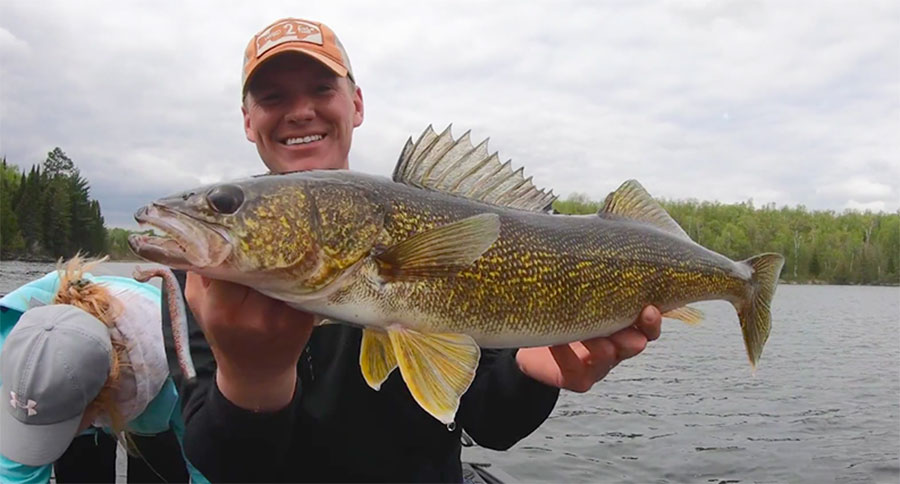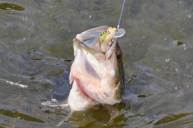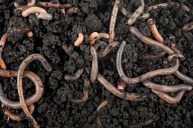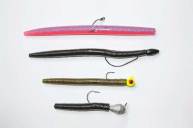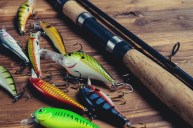Learn about this unique rig and how to catch fish using it.
Anglers know that fishing with soft plastics often necessitates creativity. Thankfully, Wired2Fish Field Editor Kyle Peterson has outlined his new spin on a creation combining a Ned rig lure with a reverse Texas rig, Neko rig combination.
Dubbed the "tiny child rig" because it's so easy even a "tiny child" could catch fish with it, Peterson's rig is able to easily slip in and out of cover to hook even the most difficult to catch fish.
Peterson explained that he created the rig while targeting walleye living in a log jam. He quickly realized he needed something that would plunge straight to the bottom.
"I also needed something that would come back up," Peterson says. "It needed to snake its way back up through the trees and the limbs and this was about the only way that I could see a bait coming back up through, but then having a small profile — something a walleye would eat. As it's proven, it's show us that it's a multi-species catcher."
Peterson adds that the tiny child rig is "the most fish-catchingest little thing I've ever seen in the world."
Sure enough, the rig not only catches walleye, but also bass, bluegill, crappie, pike and more.
Peterson also takes you through the material you can use for your own tiny child rig.
"I like using just the original Neko hook. What happens for me is I'll hook a fish and the bait will slide up my line. That's what I really like about it — the lure will slide up my line. The fish doesn't have leverage over the bait as much. It helps kind of keep the weights inside of the bait as well from being thrown by the fish."
"The great thing about this tiny child is it's very streamlined and hydrodynamic, it throws far and you can just fish it in a variety of different cover," Peterson continues.
For more fishing tips, visit Wired2Fish and follow Wired2Fish on Facebook.
NEXT: ANGLER EXPLAINS HOW TO BANK FISH IN LOW-WATER CONDITIONS
